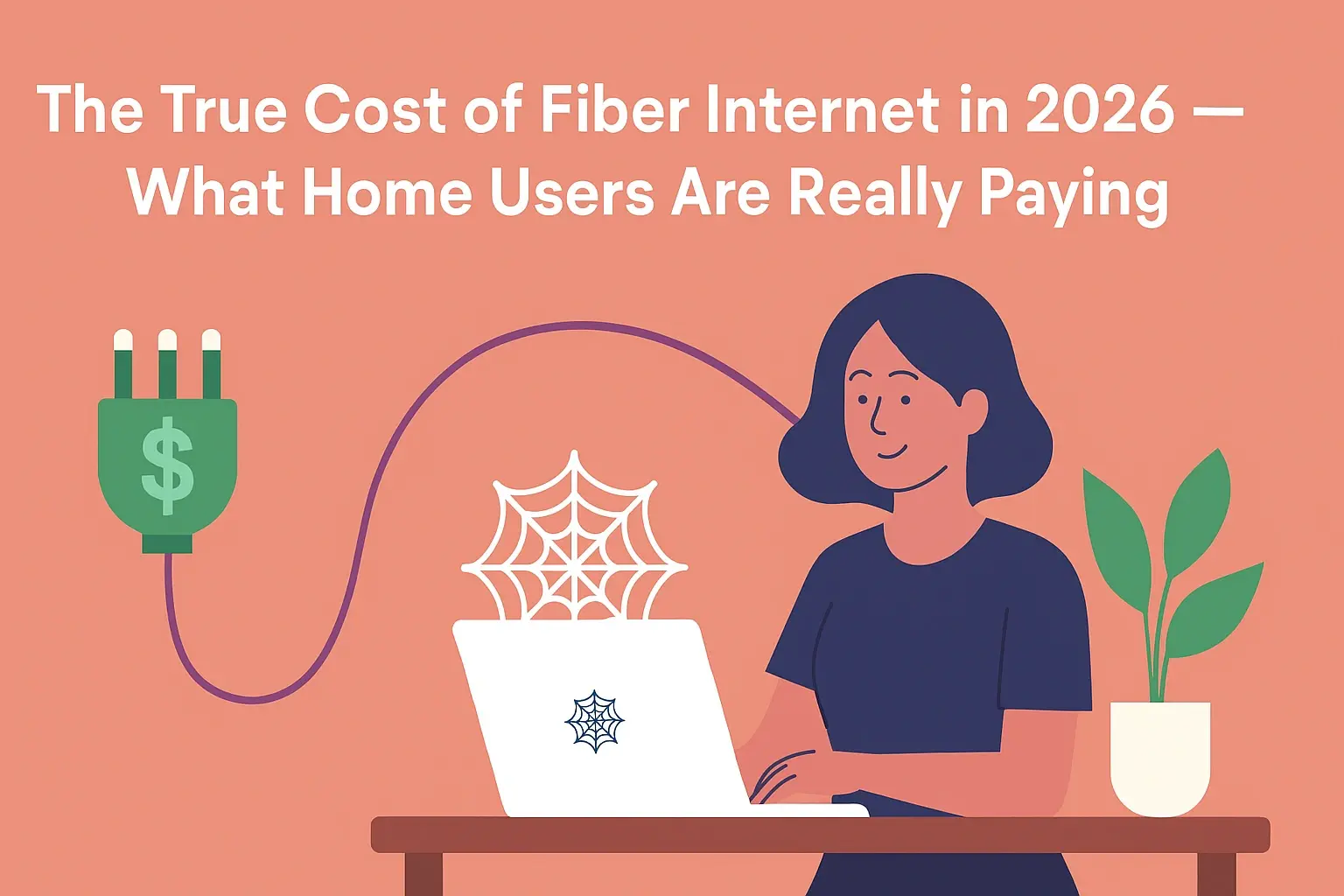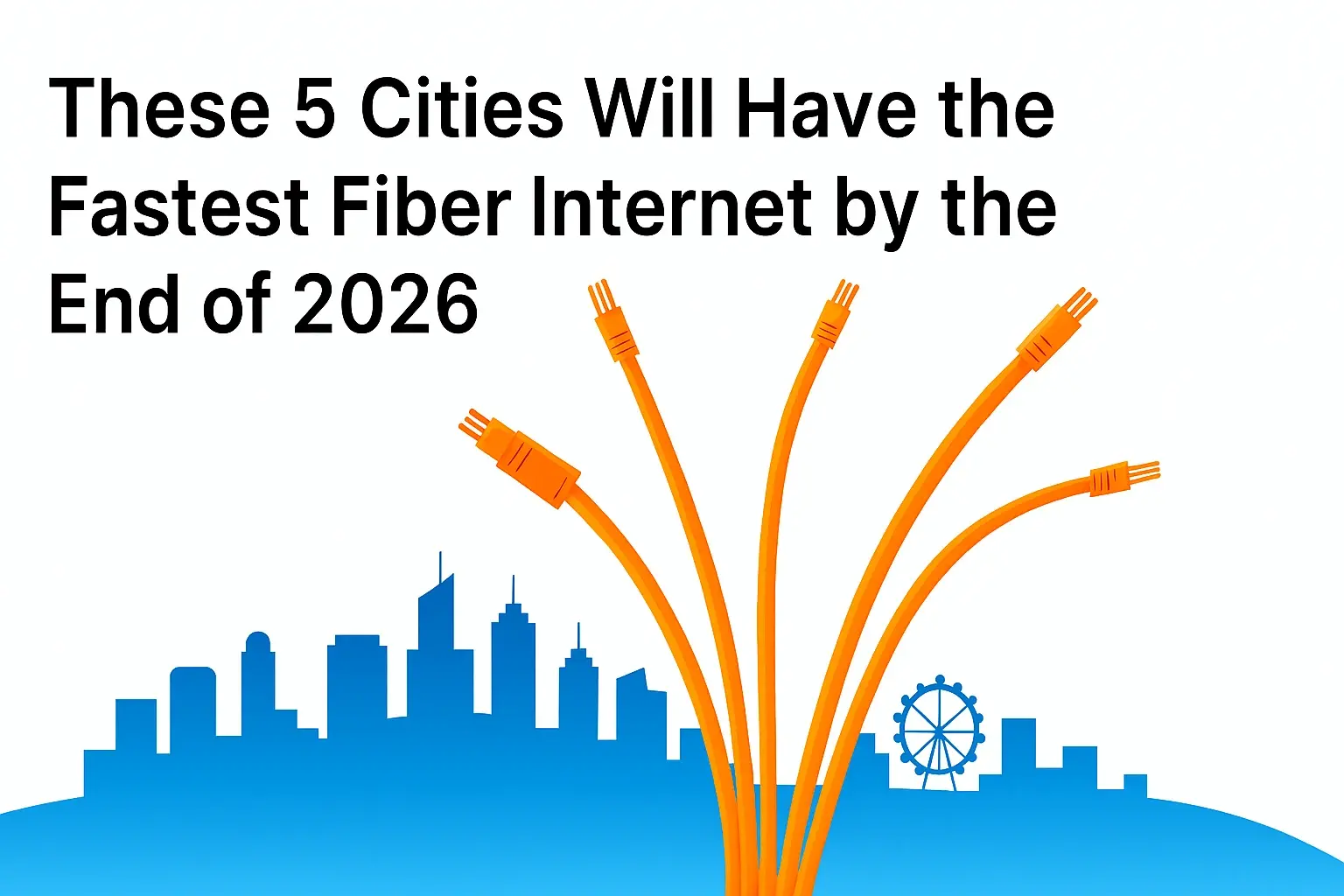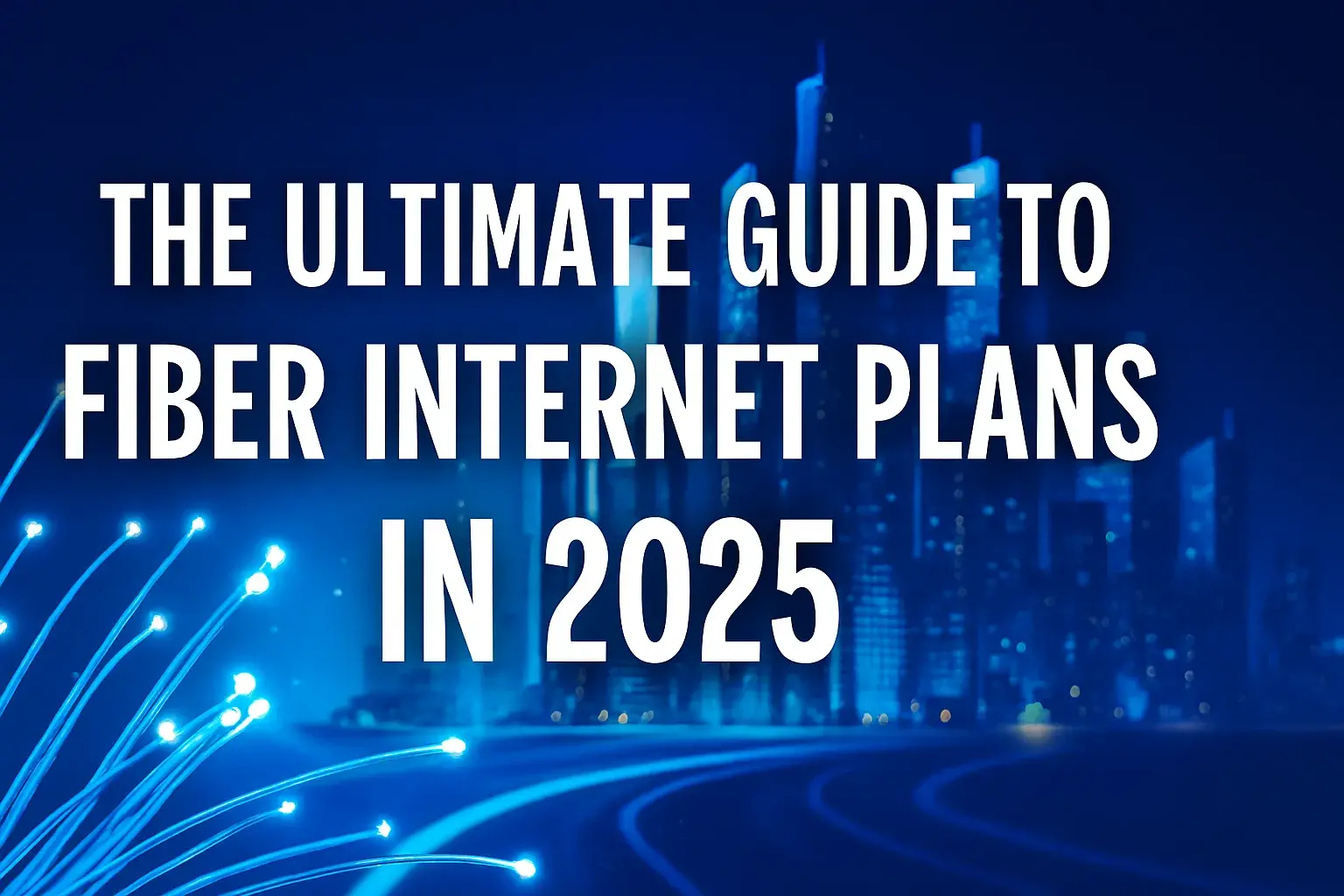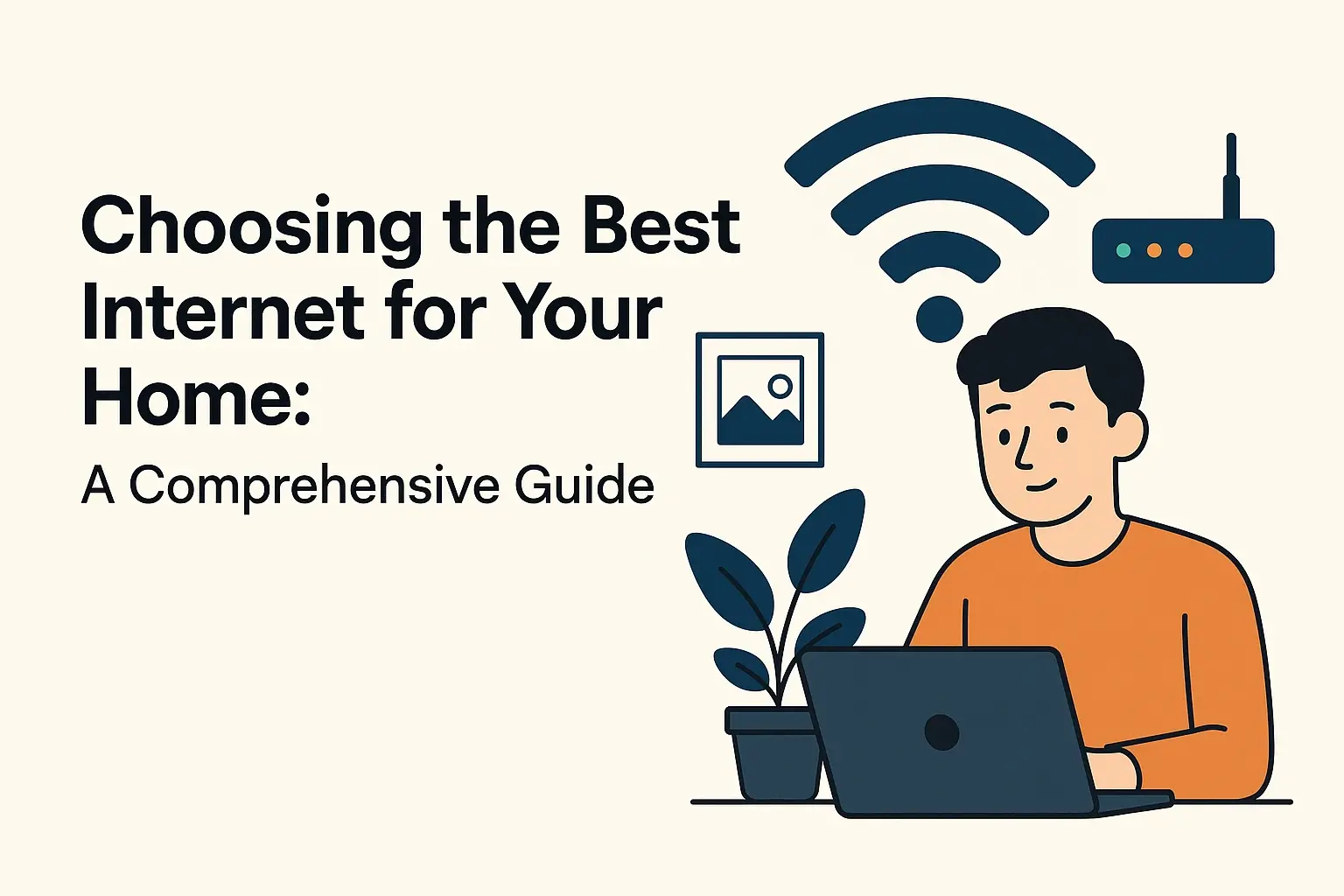The True Cost of Fiber Internet in 2026 — What Home Users Are Really Paying

As American households continue to embrace smart home devices, cloud-based work setups, and ultra-HD streaming, the demand for faster, more stable, and low-latency internet has reached new heights. Fiber internet, once considered a premium upgrade, is now increasingly standard for high-performance homes. But what does it really cost in 2026? Let’s break down the facts and reveal what users across the U.S. are truly paying for fiber broadband.
Average Fiber Internet Prices in 2026
Based on current 2025-2026 market data, the average monthly home internet bill in the U.S. ranges between $65 and $85, with fiber internet plans averaging between $70 and $120 for speeds from 500 Mbps to 1 Gbps.?
Basic 300 Mbps fiber plans start at around $55–$65 per month.
Mid-tier 1 Gbps plans run $80–$100 monthly.
Multi-gigabit (2–5 Gbps) packages range $120–$150+, targeting gamers, streamers, and smart households.
Interestingly, these prices remain relatively steady year-over-year, with median fiber rates up only about $8 since 2023 — from $75 to $83 per month.?
Regional Pricing Differences
Fiber internet pricing varies depending on infrastructure reach and provider competition:
Lower-cost states: Texas, Florida, and North Carolina often see fiber plans at 10–15% below the national average due to healthy provider competition.?
Higher-cost regions: Rural and Northeastern states may pay up to $20 more monthly, primarily due to limited access and installation challenges.
Even in rural areas, federal programs like the BEAD broadband equity initiative are expanding accessibility, reshaping affordability as new networks come online.?
What Drives Fiber Internet Costs in 2026?
Several factors shape pricing for fiber internet services across households:
1. Infrastructure Investment
Fiber buildouts are costly — with installation running between $40,000 $60,000 per mile of aerial deployment, depending on the area’s geography. Underground builds remain even more expensive.?
2. Advanced Hardware
Many 2026 fiber plans now include Wi-Fi 7 routers, mesh systems, or AI-managed network optimization, which slightly raises monthly rates but drastically improves reliability.?
3. Regional Deployment
Urban markets face higher make-ready expenses (permits, zoning, labor), while suburban and rural projects benefit from easier deployment paths.
4. Speed and Data Limits
Most fiber providers advertise unlimited data, preventing surprise overage charges — a key cost advantage over some 5G fixed wireless and older cable plans.?
Real Household Costs: Beyond the Monthly Bill
While the monthly subscription is the most visible cost, consumers should consider total ownership:
- Installation fees: Many providers waive them during promotions, but a typical one-time setup runs $100–$200.
- Equipment rentals: Router or modem leasing is about $10–$15/month, though buying your own hardware leads to long-term savings.
- Taxes & surcharges: Expect $5–$10 additional on most bills, depending on local regulations.
Ultimately, a standard fiber-connected household in 2026 pays between $85–$130 total per month, factoring in ancillary fees and equipment.
Fiber vs. Other Internet Types in 2026
| Technology | Typical Download Speeds | Upload Speeds | Average Monthly Cost | Best Use Case |
|---|---|---|---|---|
| Fiber | 500 Mbps – 5 Gbps | 500 Mbps – 5 Gbps | $70–$120 | Smart homes, 4K streaming, remote work |
| Cable | 100 Mbps – 1 Gbps | 10–50 Mbps | $60–$90 | Streaming, family entertainment |
| 5G Fixed Wireless | 100–500 Mbps | 20–100 Mbps | $50–$80 | Flexible home setups, limited areas |
| DSL | 10–100 Mbps | 1–10 Mbps | $40–$60 | Basic browsing, light users |
Fiber remains the best performance-to-cost ratio option thanks to symmetrical speeds and higher reliability, despite slightly higher monthly bills.
The Future of Fiber: Expansion and Home Value Boost
According to the Fiber Broadband Association, fiber now passes over 56% of U.S. homes — a 13% annual increase. By 2028, that figure will surpass 80%, fueled by both public and private investments.?
Not only does fiber elevate connectivity, but it also boosts real estate value by up to 4.9%, as buyers increasingly prioritize gigabit-ready homes for work-from-home and streaming lifestyles.?
How to Save on Fiber Internet in 2026?
As fiber internet becomes the gold standard for home connectivity, households are asking one key question: How can I get all that speed without breaking the bank? The good news is, in 2026, there are more ways than ever to save on fiber broadband — from smart bundling to hidden cashback deals and provider-specific discounts.
Why Fiber Is Still Worth Every Penny?
Fiber delivers unmatched speeds and reliability, making it ideal for high-data homes. Compared to cable or wireless broadband, fiber’s symmetrical upload/download speeds ensure flawless performance for video calls, gaming, cloud backups, and smart home automation.?
However, as average monthly bills range between $70–$120, saving often depends on timing and provider incentives.?
Proven Ways to Save on Fiber Internet in 2026
1. Compare and Call via CtvforMe
CtvforMe remains one of the most reliable comparison tools to find real-time local offers from top ISPs like AT&T Fiber, Frontier, CenturyLink, and Verizon Fios. They feature call-to-order options that unlock hidden deals and installation waivers not always available through standard online signups.?
Exclusive first-year pricing offers up to 30% discounts on gigabit plans.
Some providers waive $100–$200 installation fees for CtvforMe callers.
Households switching from cable to fiber can qualify for free router upgrades.
CtvforMe’s call-in feature ensures users connect directly with verified provider representatives who can offer limited-time, area-specific promotions—something web-only portals rarely provide.
2. Bundle to Beat Rising Costs
ISPs continue to reward multi-service customers. For instance:
Verizon and Spectrum customers bundling mobile and fiber home internet get $10–$20 off their monthly.
AT&T Fiber + Wireless bundles offer speed upgrades or HBO Max credits.
Through CtvforMe, users comparing bundled options often report annual savings exceeding $200–$400, especially when including TV or phone add-ons.
3. Use Your Own Equipment
Many ISPs charge between $10–$20 monthly for router rentals. You can save up to $240 annually by purchasing your own compatible fiber router.?
For Wi-Fi 6E setups, owning your device ensures:
Better network control
Higher speed handling
No long-term rental dependency
4. Sign Annual Fiber Contracts
U.S. users can find similar lock-ins through Frontier, which allows 2-year fixed-rate plans with $200 Visa Gift Cards for new subscribers.
Bonus Tip: Optimize Your Fiber Plan Usage
Saving doesn’t always mean downgrading—you can optimize how your plan is used:
If streaming dominates your usage, 1 Gbps is often overkill; a 300–500 Mbps plan suffices for most families.
Periodically review app data use and downgrade when speeds aren’t fully utilized.
Use built-in ISP portals to track device consumption and adjust capacity accordingly.
Bottom Line
In 2026, the true cost of fiber internet represents both a premium investment and a foundational utility. With average bills between $70 and $120/month, fiber brings industry-leading stability, speed symmetry, and future-focused performance — all while boosting property value and productivity.
The gap between fiber and older internet types continues to narrow, making 2026 the year when fiber internet becomes not just a luxury, but the new standard for the connected American home.
Faq
1. What is the average cost of fiber internet in 2026?
As of 2026, the average home fiber internet plan costs between $70 and $120 per month, depending on speed and location. Standard 300–500 Mbps plans average $70–$85, while gigabit packages range $90–$120. Rural areas may see higher rates due to limited infrastructure or fewer providers.?
2. Why have fiber internet prices changed in 2026?
Prices increased modestly in 2026 due to infrastructure expansion, Wi-Fi 7 router adoption, and AI-powered network upgrades. However, rising competition among fiber ISPs such as AT&T, Verizon, and Frontier has stabilized pricing, making gigabit-speed connectivity more affordable for most users.
3. Is fiber internet worth the extra cost compared to cable or 5G?
Yes. Fiber internet offers symmetrical speeds, lower latency, and greater reliability than cable or 5G home internet. While it costs roughly 10–15% more, it provides faster uploads, stable performance during peak hours, and superior streaming and gaming efficiency. For most digital households, the upgrade pays off in long-term performance.
4. How can users lower their fiber internet bills in 2026?
Customers can save by bundling services, switching to promotions, or calling providers directly for renewal offers. ISPs also provide loyalty, autopay, and paperless billing discounts, reducing monthly costs by up to 20%. Websites such as CtvforMe let users compare local fiber providers and call for exclusive installation waivers or cash-back offers.?





